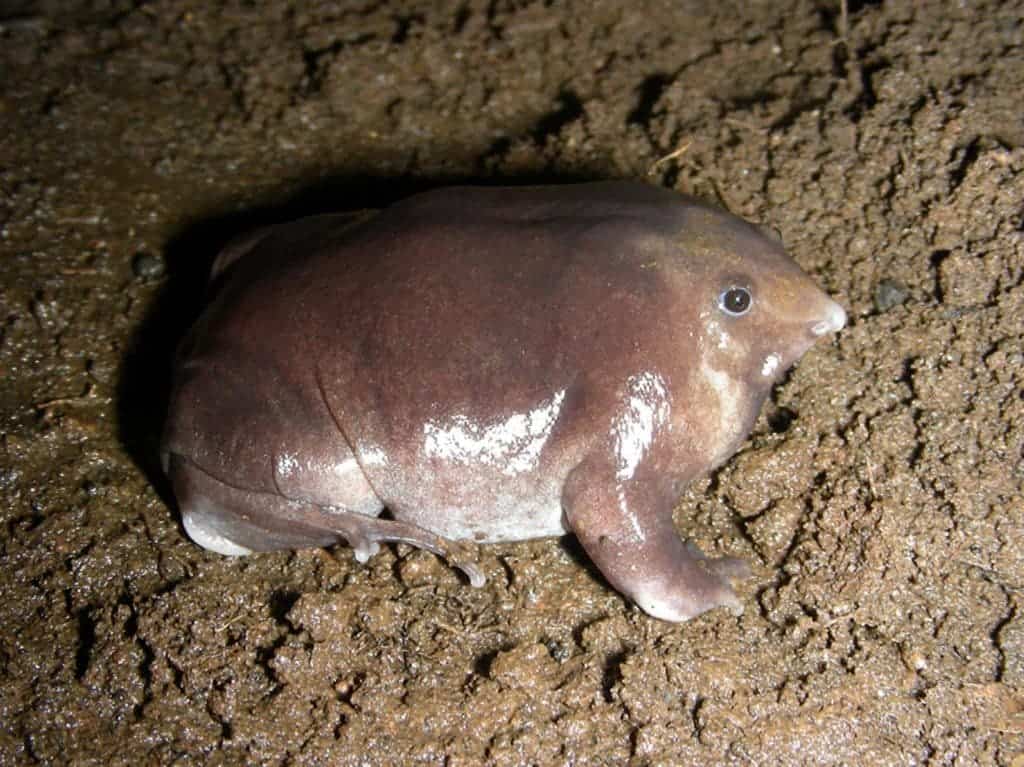An odd-looking frog that spends most its life underground and only comes outside when its ready to mate was recently discovered in India’s Western Ghats mountains. Its pointy snout, tiny eyes, and stumpy limbs might look funny but the truth is this is an extremely well-adapted creature to a life in the burrows.
The frog is called Bhupathy’s purple frog (Nasikabatrachus bhupathi), in honor of Dr. Subramaniam Bhupathy, a well known Indian herpetologist who lost his life surveying the Western Ghats in 2014. Its appearance is characterized by a shiny purple coat, light blue rings around small eyes and a signature pig snout nose, according to researchers at the Centre for Cellular and Molecular Biology (CCMB) in Hyderabad.
With its long, fluted tongue, the frog gobbles up insects that live underground like termites and ants. Rarely does it leave the safety of the underground unless it rains during the monsoon season. This is the time for mating, as evidenced by the loud calls male Bhupathy’s purple frog bellow from under the sand in mountain streams.
In the same streams, the males court and mate with females, which deposit the fertilized eggs. Within a day or two, these are already ready to hatch into tadpoles. But even in this early life stage, the purple frogs are odd.
The tadpoles have sucker-fish like mouths which they use to cling to rocks behind waterfalls like leeches. Suspended from the wet rocks, the tadpoles can spend up to 120 days in the torrent which is the longest the species ever stays above ground during its whole lifespan. Once they’ve completed their transformation, the purple frogs ready themselves for a solitary subterranean existence, the authors reported in the journal Alytes.
The findings are even more interesting once you realize this is only the second species in its family. The first is another purple frog described in 2003. Both species are very distant from their closest relatives, which live in Seychelles, likely because they had to evolve independently for millions of years.
“We confirmed it was a different species when we bar-coded its DNA and found that genetically it was very different from the Purple frog,” says Ramesh K Aggarwal, chief scientist at the CCMB and one of the five co-authors
This can only be yet another example of continental drift. About 65 million years ago, the Indian subcontinent was part of the ancient landmass of Gondwana before it split away from Seychelles.
If anything, this cute purple frog gives to show just how little we know about frogs or amphibians in general. There’s a whole world of unknown creatures out there and we can only rejoice at the opportunity to learn more about them on a daily basis.










